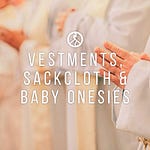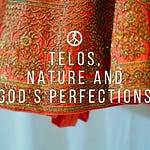Following up our explanation of why head coverings matter in the new covenant age, we consider several objections — and even more questions — to flesh out the exegetical case, and apply it to modern life.
Objections answered
It’s just cultural [00:02:08]
The hair is the covering [00:15:32]
Prayer and prophecy doesn’t mean worship, but spiritual gifts [00:17:23]
We can’t know what Paul really means, so we can’t be dogmatic about following it [00:27:14]
Men being uncovered doesn’t fit with men wearing crowns [00:28:45]
Nothing can “compete” with God’s glory [00:29:44]
Questions answered
What does “on account of the angels” mean though? [00:31:54]
When and where should we cover? Only in worship, or during any religious activity? [00:33:50]
So we cover the covering? [00:36:56]
How much should we cover? [00:37:44]
What about the braided hair passages? [00:40:24]
What about dyeing your hair? [00:43:37]
How long should hair be? [00:45:57]
Is covering only for the married? [00:51:16]
How to answer non-head-coverers saying head covering is divisive [00:54:59]
Have you heard that covering should actually be translated testicle? [00:59:03]
Do you think Eve would have covered, either before or after the fall? [01:02:18]
References
Daniel B. Wallace, What is the Head Covering in 1 Cor 11:2-16 and Does it Apply to Us Today? (June 2004)
K. P. Yohannan, Head Coverings (Kerala: Believers Church Publications, 2011), 12
Star Foster, Veiling: A Different Take On Pagan Womanhood (March 2012).
Tertullian, On the Pallium in Philip Schaff, Ante-Nicene Fathers, American edition, vol. 4 (1885), 10.
Two Centuries of Costume in America, 1620–1820 (The Macmillan Company, 1903), Vol 2, 582
Brian Schwertley, Head Coverings in Public Worship, 11.
Chrysostom, Homilies, 1 Corinthians 11













